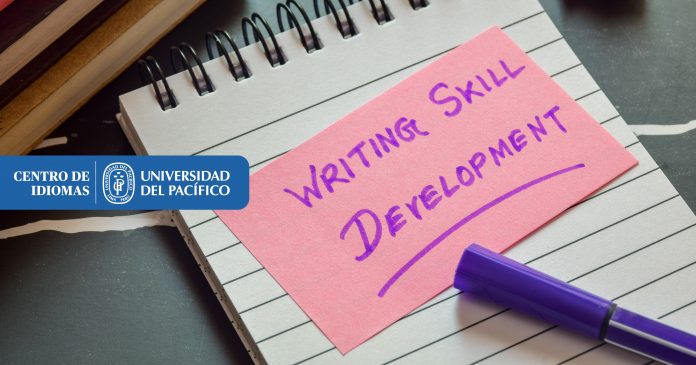Developing writing skills in a multi-level group of students is possible if and only if, we aim at the most common challenge for students of all levels: the organization of texts based on properly linked strong ideas. It is commonly assumed that students’ main writing problems are caused by weak language skills. Thus, when a composition, letter or essay is graded, our teacher’s attention is focused on grammatical, spelling and vocabulary errors.
We must consider that in the development of students’ writing skills there is an underestimated first step: training our students in how to organize their ideas, and then to analyse the potential of those ideas to be developed. This training need is found regardless of the level of English of the students. Thus, writing problems such as the organization of the text, the lack of coherence, an unfinished task, undeveloped paragraphs, the absence of a clear thesis statement in an introductory paragraph or even the inclusion of a new idea in the conclusion, are mistakes that can easily be seen from basic to advanced students.
Then, when teaching writing in a multi-level group there is something that all your students need to learn: text organization.
Organizing ideas is a key skill for any effective writer. Remember that when the writer’s ideas have not been analysed and organized within a text, the text is likely to confuse and discourage the reader from reading further.
Some strategies for working on text organization:
- Introduce your students to the five-paragraph format, which consists of an introduction, three paragraphs with a topic sentence each, and a conclusion. This knowledge is the foundation for any development in writing skills. You don’t need to do this in a lesson. It is a good idea to break this format into mini lessons. For example, in the first one you only focus on the introduction.
- Read a five-paragraph text with your students but ask them to pay attention to the ideas presented and how they are related within sentences and paragraph by paragraph.
- Give your students plenty of practice ordering a paragraph in a text. Do this by providing them with a set of written ideas to sort through until a paragraph is fully developed.
- Teach them how to write an outline by asking your students to organize their ideas in order of importance. It is a good habit to spend time thinking about the ideas to be developed and their organization before writing. If this first step is skipped, a student’s written work will lack cohesion.
- Train your students in writing topic sentences as this clearly conveys the main idea of a paragraph to the reader. Topic sentences should not be too general or too specific.
- Teach your students how to develop ideas within a paragraph. Once students have listed their topic sentences, one per paragraph, they should think about how they will unfold. A good tip is to think of examples to illustrate the idea and determine how this idea will tie into the next paragraph.
- From beginners to advanced learners, students need to be trained in the use of transition words as they are essential for linking related ideas.
- I have found that giving a list of transition words sorted by their function within sentences is much more useful than a disconnected list based on meaning.
| Giving examples | For example, for instance |
| Giving sequences | Now, then, first, later, meanwhile, finally. |
| Making comparisons | Similarly, likewise |
| Adding emphasis | In fact, of course |
| Adding information | In addition, furthermore, moreover, besides |
| Showing contrast | However, nevertheless, in contrast, on the contrary, on one hand/on the other hand) |
| Giving reasons | For this/that reason, as a result, as a consequence, therefore |
We can adapt this list according to the language proficiency of our students. For example, for a basic level group you might start with one word per category instead of the two or three words listed on each line.
| Time: when, whenever, if |
| Reason: since, because |
| Purpose : in order to, so that |
| Contrasts: although, even though, though |
From the basic levels, our students must be trained in the organization of texts. Obviously, this training will deepen according to their progress in their English proficiency. The challenge for teachers is to emphasize the importance of organizing ideas before even starting to write a simple paragraph in a beginner course. Unfortunately, many students may think that because they are not writing in their native language, they do not need to worry about the quality and organization of their ideas.
Let’s start with simple outlines to motivate our students to think about ideas and how to organize them. Do not wait until they reach an intermediate level of English. Text organization is such an important skill that can be transferred when writing in any other language. In fact, it can be a wonderful contribution of any English course.










